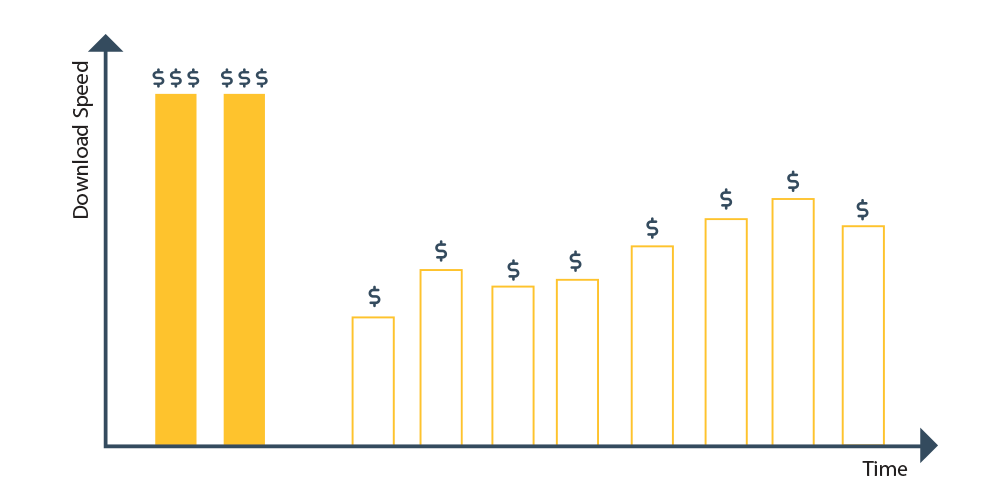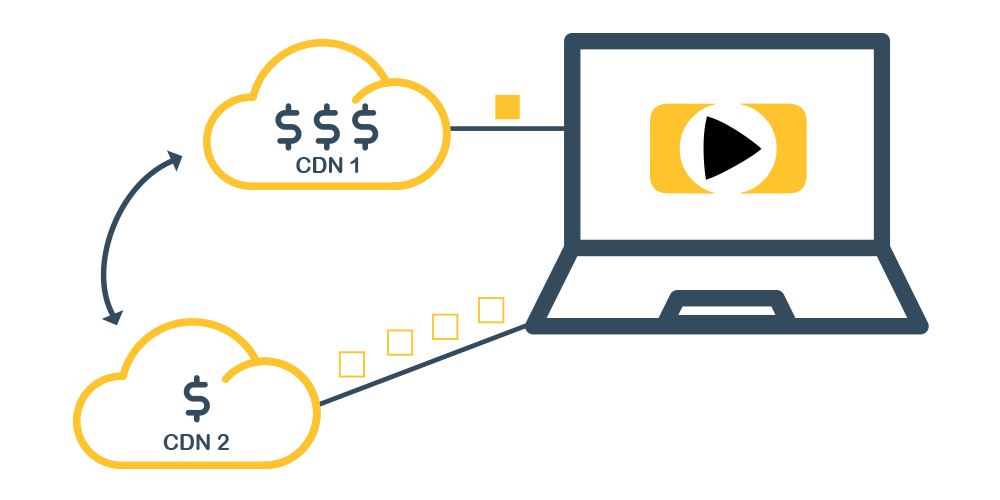For video engineers it is clear: The online video industry is evolving at an incredibly fast pace. During the last few years, we’ve seen the demise of old streaming protocols and the introduction of new ones, the disappearance of browser plugins, an explosion in video capable consumer devices, new advertisements formats, and many more changes.
Although the challenges today are different, they are not simpler: Delivering video reliably over the internet, in a blink of a second, while at the same time reducing the delivery cost remains one of the biggest obstacles to overcome. This article will demonstrate the importance of a versatile and powerful video player API in solving these challenges.
Increasing reliability and performance
When delivering your video content over a single content delivery network (CDN), reliability will always be a concern. While the chance of an outage occurring is always minimal, it can drastically hamper your reputation, especially if it occurs during a global events such as the World Cup 2018. This is the reason why more and more companies are now using multiple CDNs for their video delivery.
Ideally, the video player API will provide information about the error rate, latency, and data transfer rate of different CDNs as well as the ability to manipulate and redirect network requests as they are made. This enables your video player to choose between different CDNs as the video is being played and to autonomously recover in the rare cases where one of the CDNs becomes unavailable.
Reducing delivery costs
When talking about viewer experience, the most common key metrics are start-up time and seek time. In order to actually deliver a great experience to end users, a state-of-the-art content delivery network (CDN) is required, which tends to be costly. While low start-up time and seek time is desirable, using multiple CDNs to deliver video content provides possibilities to reduce these high delivery costs (watch here our demo).

Fig. 1 - Cost vs Time downloading
To accomplish this, the video player API should provide information about its current buffer size and updates about any changes in its buffer size, and it should also allow network requests to be redirected as the developer pleases. This can be combined with cost weights of the different CDNs to make decisions during playback. The flexibility of the API enables your video player to choose an expensive high-speed CDN during start-up, seeking, or in situations where its buffer size is low, and switch to a lower-cost CDN when its buffer size is sufficiently high.
Overall, about 80% of video data can be delivered from a lower-cost CDN without hampering the viewer experience.

Fig. 2 - How THEOplayer CDN optimization API works
The role of a video player API
Increased reliability and performance, as well as reduced delivery costs, can be achieved by combining content delivery over multiple CDNs with a powerful and versatile video player API. While this is just one case where the video player API plays an important role, similar cases can be made for optimizing the adaptive bitrate behavior, collecting analytics about bandwidth usage, server-side or dynamic ad insertion, or resolving peak noise in audio.
Finally, care needs to be taken to ensure that these cases can be tackled across todays fragmented landscape of video capable devices. When using multiple different video players, there is a preference for consistency in feature sets and API. This is easier to accomplish using a multi-platform video player.
If you want to know more about how THEOplayer can help you offer the best experience when streaming your contents, get in touch with us. Our team of experts will be happy to help you.


